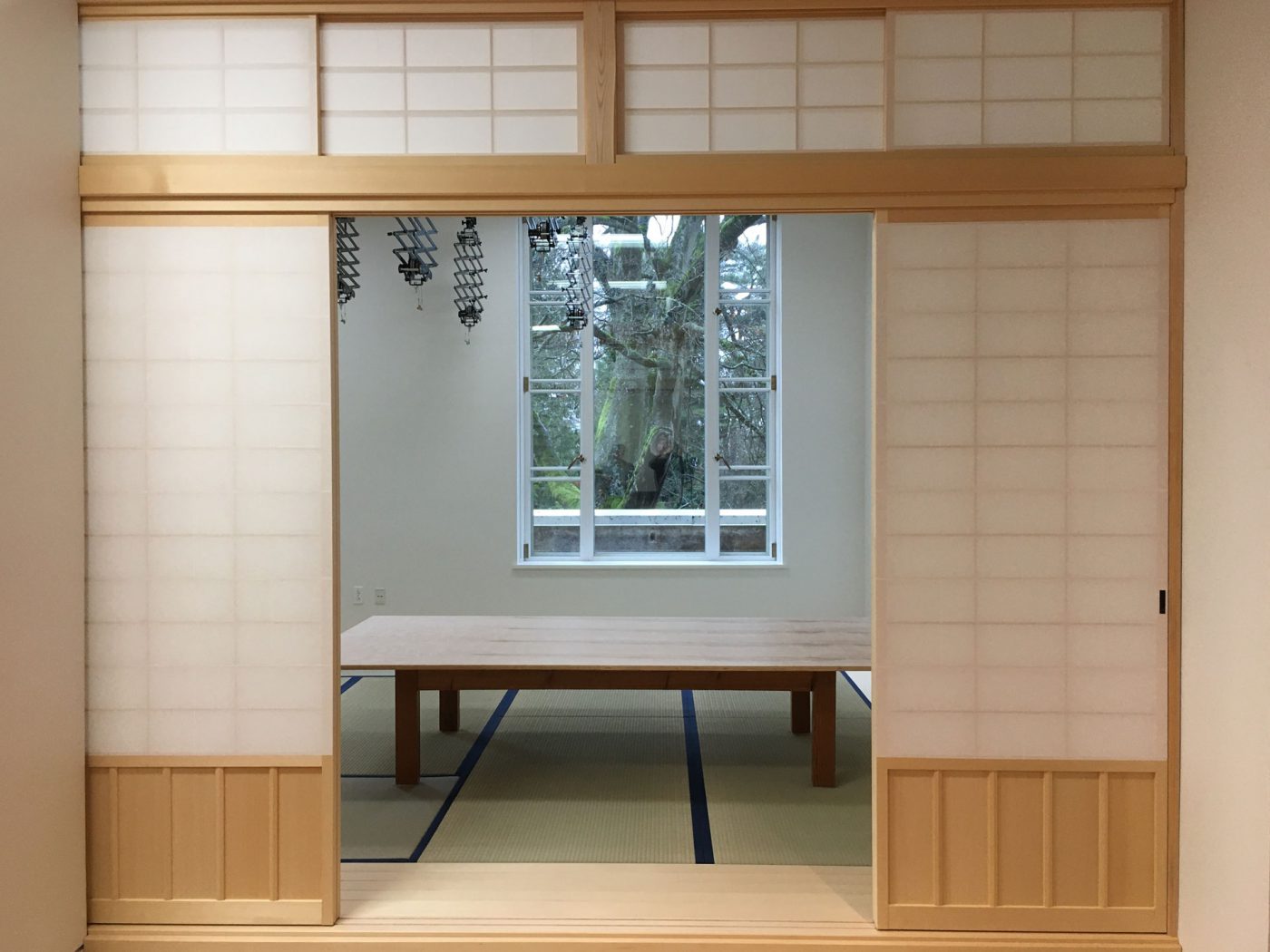Why Tatami? Conserving Asian Paintings at SAM
One of the most unique features of the newly remodeled Asian Art Museum is the Asian Paintings Conservation Studio. As the only conservation studio on the west coast entirely devoted to the care and conservation of Asian paintings, the studio provides new opportunities to care for SAM’s Asian art collection. Once it is fully operational, the studio will also accept conservation projects from regional museums and private collectors. Designed so that the public can view the studio through large glass doors, the studio is located on the lower level of the Asian Art Museum. When you peer through the glass doors, you will immediately notice a beautiful tatami platform enclosed with sliding shoji doors. This platform will serve as a dedicated work area for a small team trained in the care and conservation of Asian paintings.
The tatami platform and shoji doors were built by a local master craftsman, Koji Uchida. Mr. Uchida’s company, Wafu Builders, designs and builds indoor and outdoor spaces using traditional Japanese carpentry techniques. Based on research conducted by our Chief Conservator, Nicholas Dorman, on research trips to Asian paintings conservation studios in Asia, North America and Europe, Mr. Uchida and Mr. Dorman collaborated on the design of the studio. We are so lucky that Mr. Uchida lives within driving distance of the museum!
Mr. Uchida built the tatami platform and shoji doors from the ground up. Before the remodel, this area housed staff offices and is part of the original building footprint. As you would expect in an old building, the floor and walls are not completely square or level. To create a level foundation for the tatami, Mr. Uchida built a two-by-four frame. As you can see in this photo, he used hundreds of custom-cut shims to level the platform.
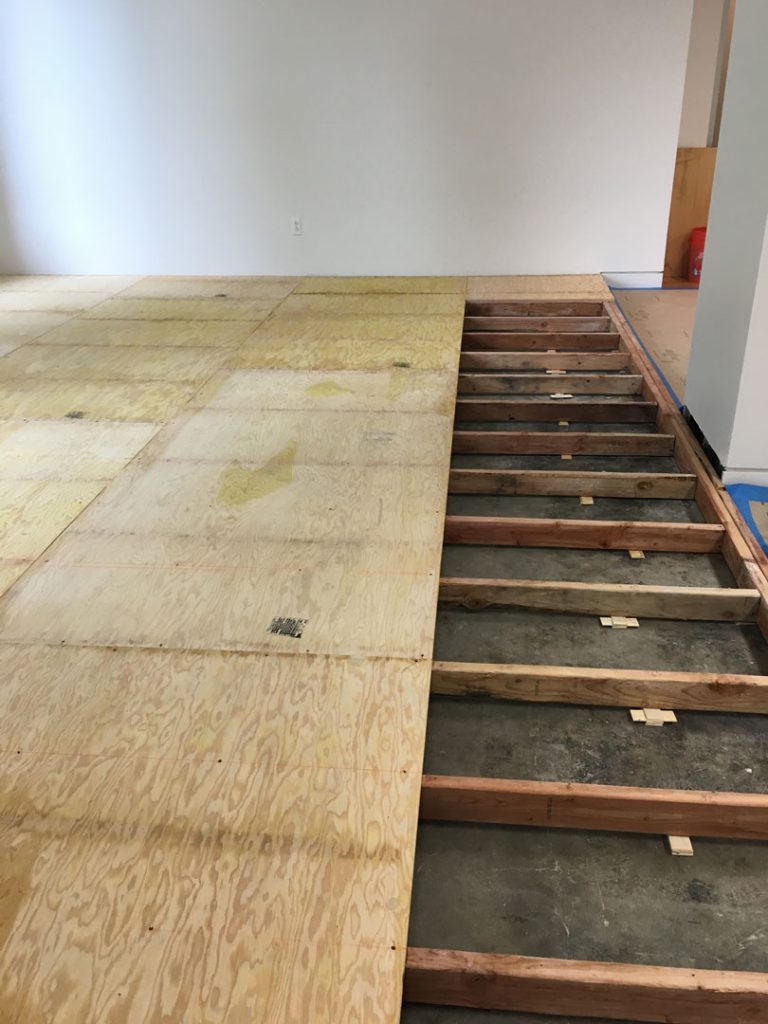
Once the substructure was complete, Mr. Uchida began to build out the visible elements of the platform. The platform features 12 tatami mats, which are surrounded by a border of fine-grained Alaskan Yellow Cedar. The next image shows the beautifully interlocked corners of the platform. Creating this careful fit required precision cuts and impeccable measurements. Mr. Uchida’s workmanship is meticulous, and he spent many hours carefully fitting and refitting the various pieces of wood until the final composition met his high standards.
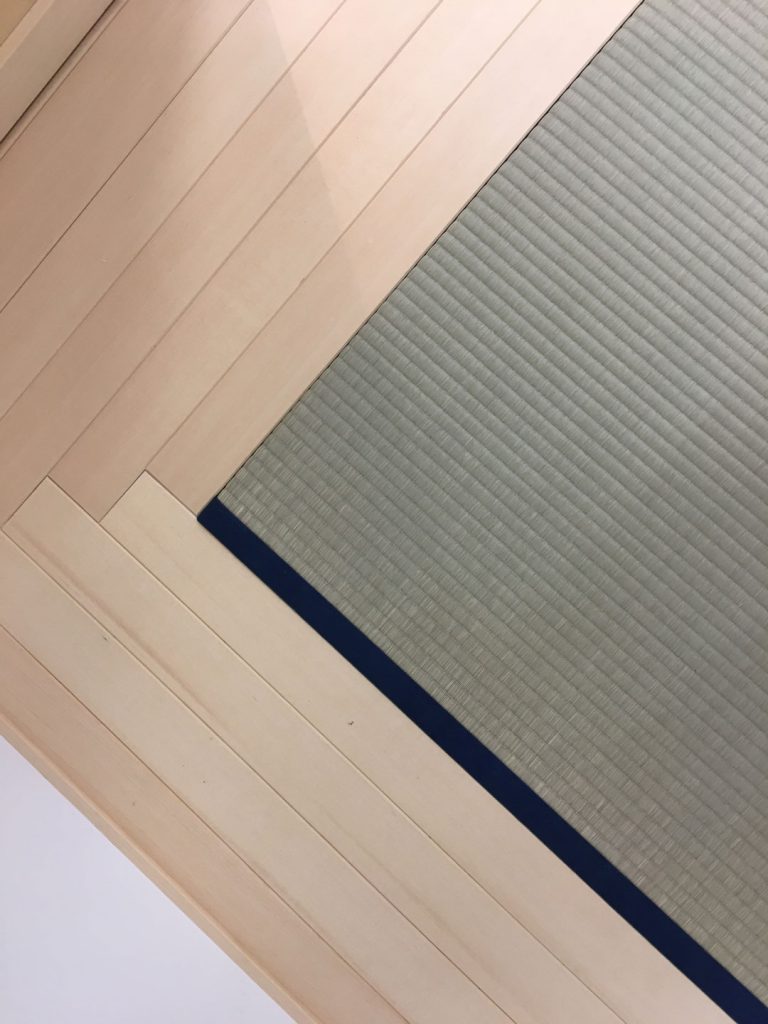
Though Mr. Uchida used power tools to rough cut the wood, many details were executed with hand tools. In the image below, you can see that the slot in the vertical beam is hand chiseled. Be sure to notice the unique grain pattern of the vertical post. Made of Kitayama cedar, this post was strategically cut to showcase the wood’s wavy grain. A building material often used in traditional Japanese architecture, Kitayama cedar grows in and around the Kitayama area of Kyoto. The wavy grain is created by pruning branches from the trunk as it grows and tightly binding the trunk with pieces of plastic and wire. Left in place for several years, this wrapping creates a distinctive and highly prized grain pattern.
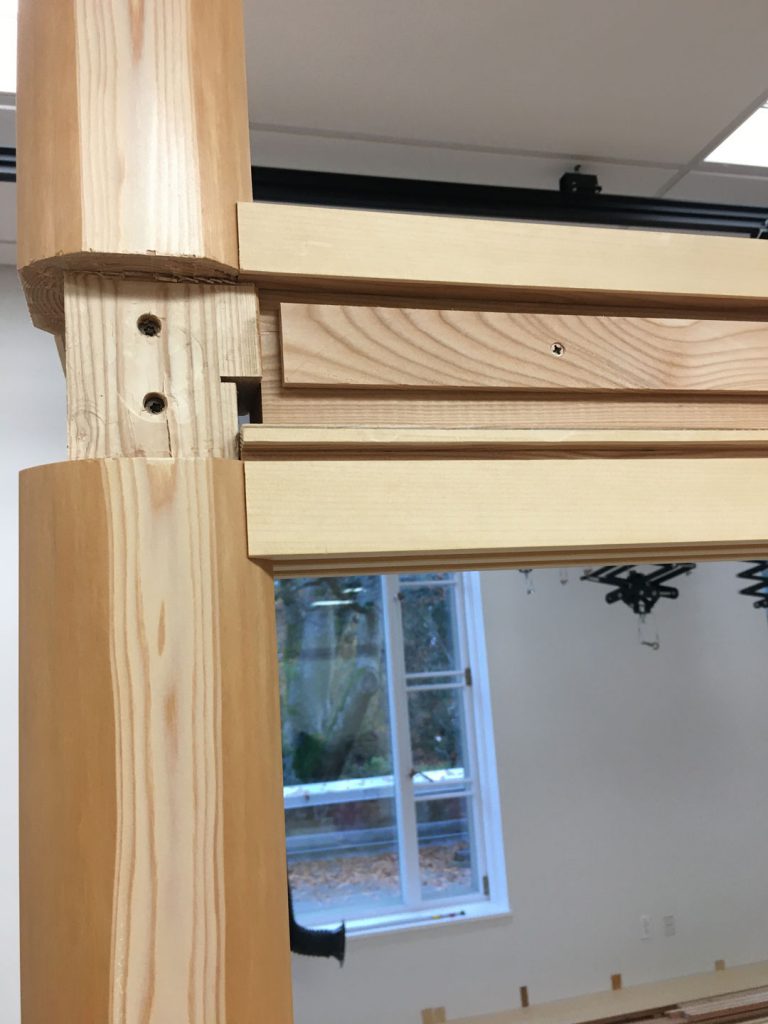
Below is another view of the same corner. With the horizontal support in place, you can see how careful measuring and cutting creates a perfect fit.
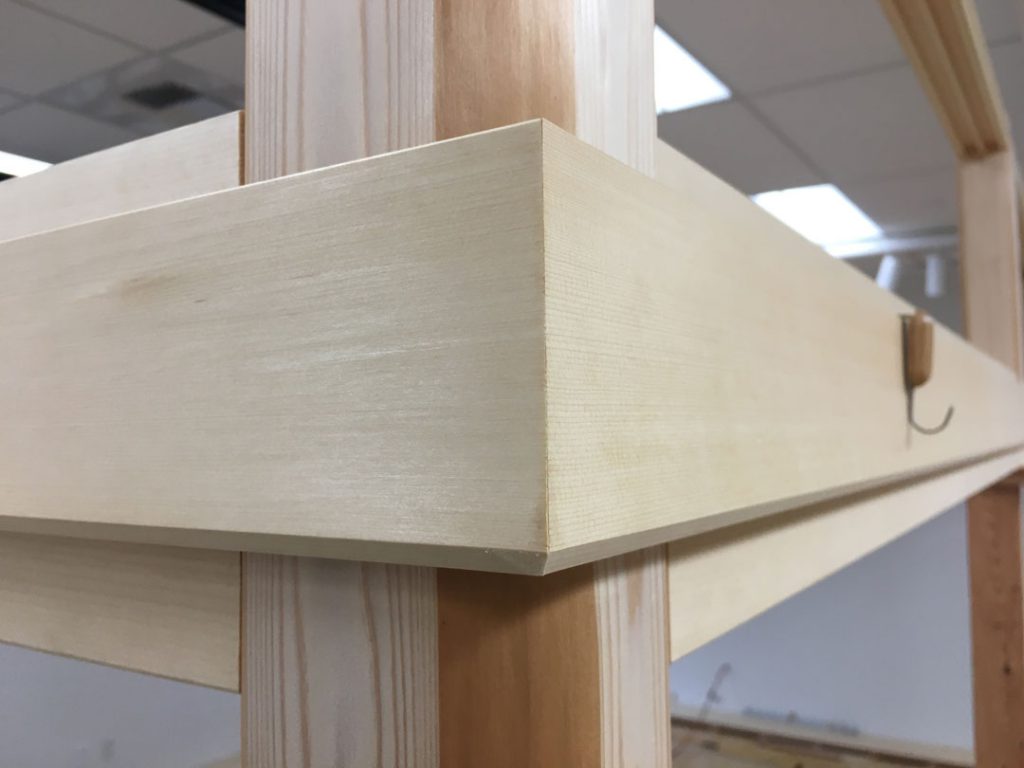
Once the platform and the shoji framing were complete, Mr. Uchida returned to his studio and began making the tatami mats. Using tatami omote (the woven facing) imported from Japan, Mr. Uchida constructed each mat. The blue edging, or heri, is made from hemp and is also imported from Japan. Tatami heri vary from plain colors to subtle patterns. Mr. Uchida felt that for such a unique and special space, hemp heri would be appropriate and signify its importance.
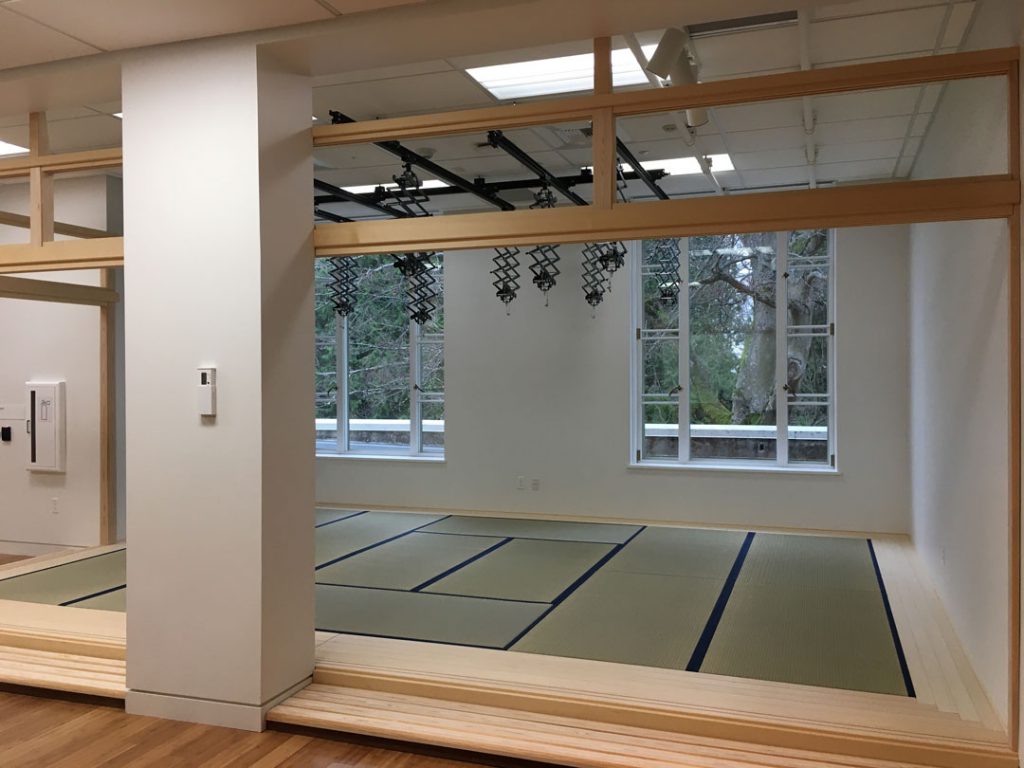
Sliding shoji doors were the final component. Working from his home workshop, Mr. Uchida built the lattice for the doors and carefully glued the paper facing to the lattice. Faced with mino paper from Japan, the doors can be left open for public viewing or closed for when a conservator is working on a tricky treatment. Both the lower shoji and the upper ranma slide smoothly and quietly.
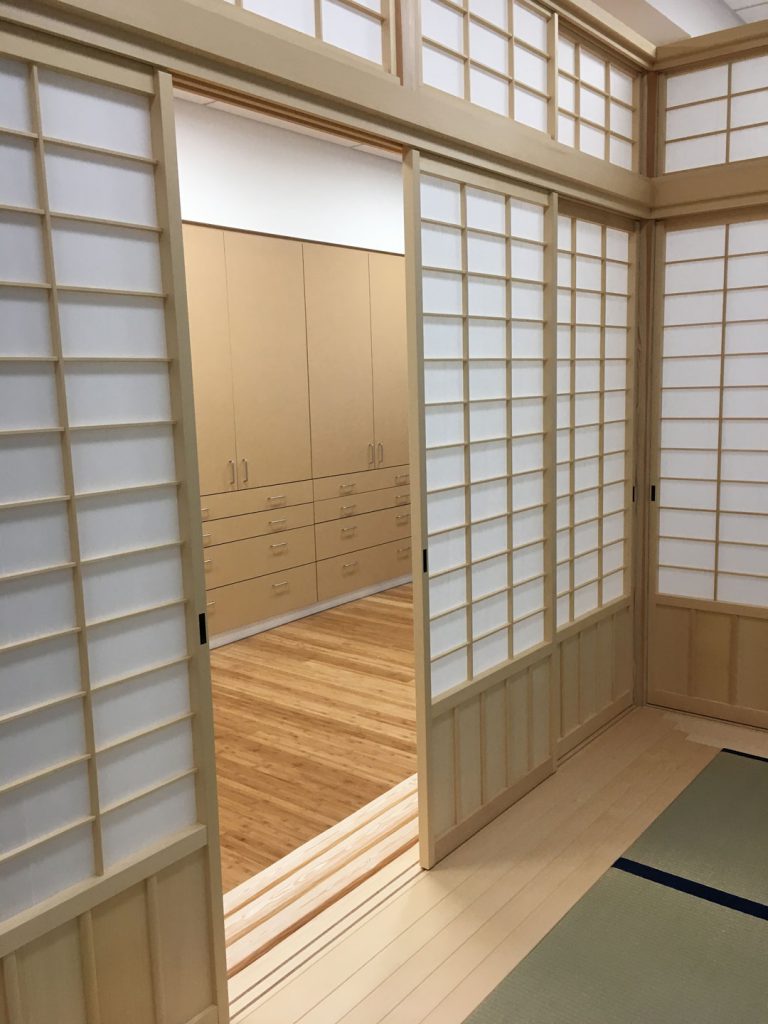
It was a pleasure to observe the work of Mr. Uchida throughout the process. Every day, I feel lucky that my desk is adjacent to this beautiful space. Once the Asian Art Museum can reopen, be sure to stop by and take a peek at the studio. When we are ready, we will offer opportunities for the public to come inside the studio and learn more about Asian paintings conservation and current studio projects. In the meantime, we are making plans for future conservation projects and looking forward to reopening the studio. We can’t wait to welcome you back to the museum!
– Rachel Harris, SAM Asian Paintings Conservation Studio Associate
